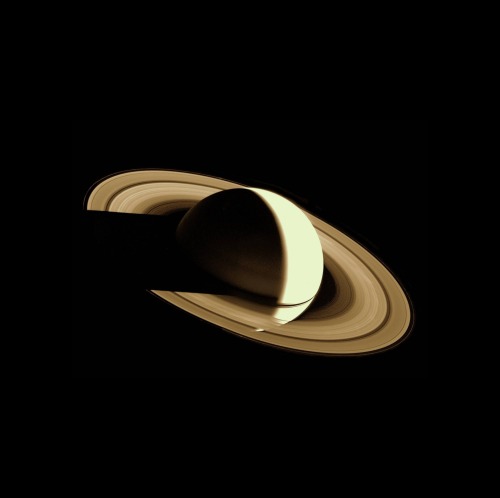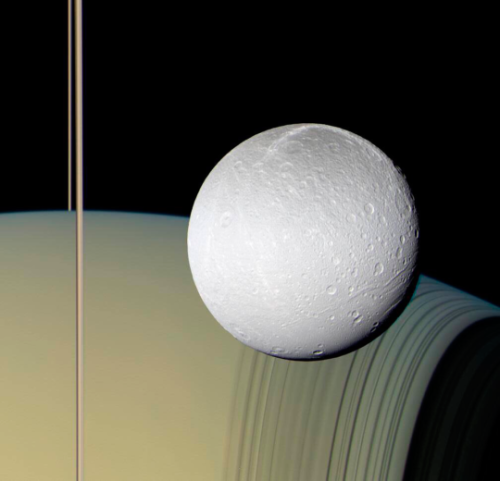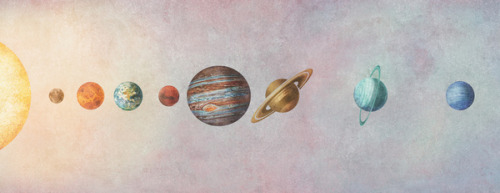Saturn... - Blog Posts

She’s staring directly at the sun

Another picture of Saturn (3200x1800, CG)
Taken with Space Engine 0.990.37.1720


Saturn has a mysterious hexagon at its north pole that has refused to give up its secrets, probably because neither Voyager 1 nor Cassini was able to plunge that deep and survive. Harvard scientists Rakesh Yadav and Jeremy Bloxham might have finally started to figure out what causes this peculiar feature. They believe that vortexes occur at the planet’s north pole because of atmospheric flows deep within the gas giant, and that these vortexes pinch an intense horizontal jet near the equator—which is what warps the storm into a hexagon. It still looks unnatural though.....!!!

Saturn observed by space probe Voyager 1 on November 16, 1980
Credit: NASA

an actual true color photograph showing Saturn, its rings, and one of its moons taken by the Cassini space probe orbiting 23.8k miles away, October 11, 2005


What are 100 facts about Saturn ?

Read all 100 facts here
Saturn's Rings Shine in Webb's Spectacular Infrared Portrait. Read Full article here

In a milestone event on June 25, 2023, NASA's James Webb Space Telescope directed its focus towards the renowned ringed planet Saturn, capturing its first-ever near-infrared observations. The initial imagery obtained by Webb's NIRCam (Near-Infrared Camera) has already captivated researchers. At this particular infrared wavelength, Saturn appears remarkably dark due to the absorption of sunlight by methane gas in its atmosphere. However, the icy rings retain their relative brightness, resulting in a striking and unconventional depiction of Saturn in the Webb image. This captivating image was acquired as part of the Webb Guaranteed Time Observation program 1247. The program involved conducting extensive observations of Saturn, specifically designed to assess the telescope's ability to detect faint moons within the planetary system and explore the intricacies of its luminous rings. Any newly discovered moons could provide vital insights into the material flow within the present Saturn system and offer glimpses into its past history.
Credits:NASA, ESA, CSA, Matthew Tiscareno (SETI Institute), Matthew Hedman (University of Idaho), Maryame El Moutamid (Cornell University), Mark Showalter (SETI Institute), Leigh Fletcher (University of Leicester), Heidi Hammel (AURA), Image Processing: Joseph DePasquale (STScI)
Read Full article here
In a new discovery released on 05-30-2023 - James Webb Telescope Maps Surprisingly Large Plume Jetting From Saturn’s Moon Enceladus. Full article here


Join our Space family💙 🔔And turn on post notification.🔔 - Kindly follow @_space___lover_ for more interesting posts in future. • Double TAP ❤️ for more.... Follow @_space___lover_ to Learn New Amazing Stuff Everyday - - Do you agree with this post? 💯 ❗️Follow us for more Space Science Facts❗️ @_space___lover_ @_space___lover_ @_space___lover_ @_space___lover_ @_space___lover_ Double tap ❤️ Share More👇 Follow us for more 🌍 -tag:-) #nasa #galaxies #spacetravel #universes #earthplanet #nasabeyond #spacescience #mars #spacelover #physicsisfun #theoreticalphysics #rocketlaunch #rocket #iss #spaceart #elonmusk #spaceshuttle #astronaut #launching #astrophysics #portcanaveral #rocket #nasa #mightsky #astronomical #astronomy #jupiter #saturn #space (at Stars In The Sky) https://www.instagram.com/p/CNIFepBjdWH/?igshid=1993xavyzcshp

Why would clouds form a hexagon on Saturn? Follow us to explore more with us @the_astrophysics_forum. Nobody is sure. Originally discovered during the Voyager flybys of Saturn in the 1980s, nobody has ever seen anything like it anywhere else in the Solar System. Acquiring its first sunlit views of far northern Saturn in late 2012, the Cassini spacecraft's wide-angle camera recorded this stunning, false-color image of the ringed planet's north pole. The composite of near-infrared image data results in red hues for low clouds and green for high ones, giving the Saturnian cloudscape a vivid appearance. This and similar images show the stability of the hexagon even 20+ years after Voyager. Movies of Saturn's North Pole show the cloud structure maintaining its hexagonal structure while rotating. Unlike individual clouds appearing like a hexagon on Earth, the Saturn cloud pattern appears to have six well defined sides of nearly equal length. Four Earths could fit inside the hexagon. Tighten your seatbelts and get ready to explore endless universe 🚀 Make sure you follow us @the_astrophysics_forum To stay on board 👨🚀 . . . . . . . #saturn #saturnhexagon #spacex #elonmusk #space #nasa #isro #universetoday #universe #hubbletelescope #hubble #milkywaychasers #milkyway #spacetime #spaceexploration #spacetravel #deepspace #astronomy #neildegrassetyson #astronomer #blackhole #earthday #earth #science #astronaut #planets #astrophysics #cosmology #nebula #solarsystem https://www.instagram.com/p/CDK5eXgjVPs/?igshid=ponilu3snxkk
This video compare the sizes of different celestial bodies that we know and remind how tiny we are in this system. Tighten your seatbelts and get ready to explore endless universe 🚀 Make sure you follow us @the_astrophysics_forum To stay on board 👨🚀 . . . . . . . #comparision #celestial #bodies #mercury #mars #venus #betelgeuse #sirius #sun #neptune #uranus #jupiter #saturn #wolf359 #aldebaran #antares #pollux #rigel #astrophysics #astronomy #science #nasa #universe #space #cosmos #earth #blackhole #planets #solarsystem (at Outer Space) https://www.instagram.com/p/CC0-2bVDFSq/?igshid=6z98f6ogyyas

Saturn's E ring is very tenuous, only visible when backlit by the sun, and is potentially the Bluest naturally occurring object in the solar system. Follow us to explore more with us @the_astrophysics_forum . Tighten your seatbelts and get ready to explore endless universe 🚀 Make sure you follow us @the_astrophysics_forum To stay on board 👨🚀 . . . . . . . @nasa @nasajpl @olegcassini #saturn #saturnrings #cassini #astrophysics #astronomy #science #nasa #universe #space #physics #cosmos #cosmology #earth #astrophotography #galaxy #blackhole #spacex #planets #solarsystem #moon #einstein #quantummechanics #telescope #milkyway #scientist #astronaut #stephenhawking https://www.instagram.com/p/CCNgX2yDWGg/?igshid=sa74le2xvdtp

Seen from ice moon Tethys, rings and shadows would display fantastic views of the Saturnian system. Follow us to explore more with us @the_astrophysics_forum . Haven't dropped in on Tethys lately? Then this gorgeous ringscape from the Cassini spacecraft will have to do for now. Caught in sunlight just below and left of picture center in 2005, Tethys itself is about 1,000 kilometers in diameter and orbits not quite five saturn-radii from the center of the gas giant planet. At that distance (around 300,000 kilometers) it is well outside Saturn's main bright rings, but Tethys is still one of five major moons that find themselves within the boundaries of the faint and tenuous outer E ring. Tighten your seatbelts and get ready to explore endless universe 🚀 Make sure you follow us @the_astrophysics_forum To stay on board 👨🚀 . . . . . . . #saturn #tethys #saturnmoonmatrix #astrophysics #astronomy #science #nasa #universe #space #physics #cosmos #cosmology #earth #astrophotography #galaxy #blackhole #spacex #planets #solarsystem #moon #einstein #quantummechanics #telescope #milkyway #scientist #astronaut #stephenhawking https://www.instagram.com/p/CCAX2r9DuIw/?igshid=1mgrm0jnhcsg7

Signs of Life? Follow us to explore more with us @the_astrophysics_forum . Saturn's sixth largest moon, Enceladus, has loomed large in the minds of astrobiologists since 2005, when Cassini first spotted geysers of water ice erupting from "tiger stripe" fissures near its south pole. Scientists think these geysers are blasting material from a sizable ocean buried beneath the satellite's ice shell, indicating that Enceladus has liquid water, one of the key ingredients required for life. Tighten your seatbelts and get ready to explore endless universe 🚀 Make sure you follow us @the_astrophysics_forum To stay on board 👨🚀 . . . . . . . #enceladus #saturn #saturnmoonmatrix #astrophysics #astronomy #science #nasa #universe #space #physics #cosmos #cosmology #earth #astrophotography #galaxy #blackhole #spacex #planets #solarsystem #moon #einstein #quantummechanics #telescope #milkyway #scientist #astronaut #stephenhawking https://www.instagram.com/p/CBubTsnDCNd/?igshid=9ba6ulbpji52




The gas giants of our solar system are Jupiter, Saturn, Uranus and Neptune.
planet painting by @Kerstin-Jacobs http://little-starlight-galaxy.eu



















